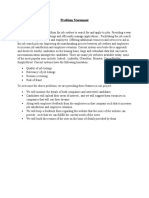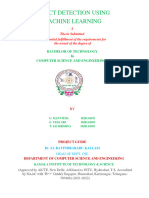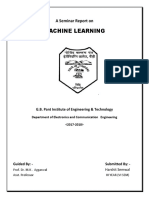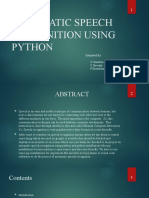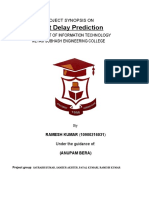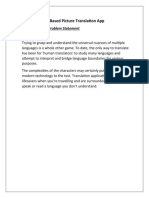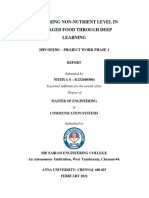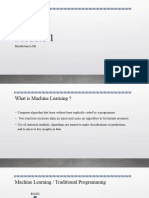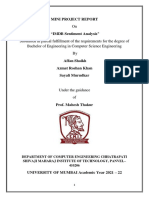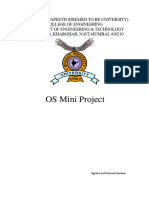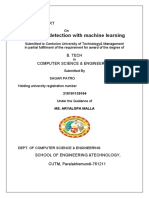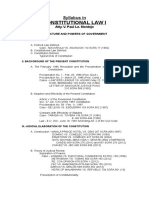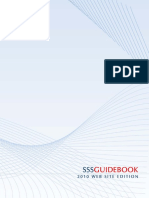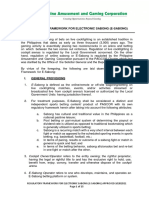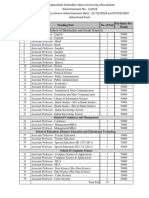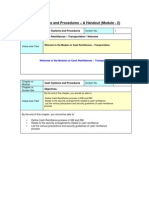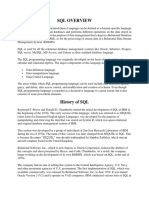100% found this document useful (1 vote)
806 views22 pagesPROJECT REPORT For Machine Learning
This document is a project report submitted by M. Syamla to Centurion University of Technology & Management for their B.Tech degree in partial fulfillment of the degree requirements. The project aims to build a machine learning model for language detection using text data from documents in 17 different languages. The document outlines the introduction, use cases, dataset, text preprocessing steps, and model evaluation process for a language detection model built using machine learning techniques.
Uploaded by
Swapna RayCopyright
© © All Rights Reserved
We take content rights seriously. If you suspect this is your content, claim it here.
Available Formats
Download as DOCX, PDF, TXT or read online on Scribd
100% found this document useful (1 vote)
806 views22 pagesPROJECT REPORT For Machine Learning
This document is a project report submitted by M. Syamla to Centurion University of Technology & Management for their B.Tech degree in partial fulfillment of the degree requirements. The project aims to build a machine learning model for language detection using text data from documents in 17 different languages. The document outlines the introduction, use cases, dataset, text preprocessing steps, and model evaluation process for a language detection model built using machine learning techniques.
Uploaded by
Swapna RayCopyright
© © All Rights Reserved
We take content rights seriously. If you suspect this is your content, claim it here.
Available Formats
Download as DOCX, PDF, TXT or read online on Scribd
/ 22

